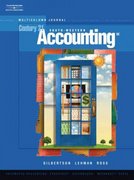I need help with this case study
Case Study 1 Springfield Express is a luxury passenger carrier in Texas. All seats are first class, and the following data are available: Number of seats per passenger train car Average load factor (percentage of seats filled) Average full passenger fare Average variable cost per passenger Fixed operating cost per month 90 70% $ 160 $ 70 $3,150,000 a. What is the break-even point in passengers and revenues per month? b. What is the break-even point in number of passenger train cars per month? c. If Springfield Express raises its average passenger fare to $ 190, it is estimated that the average load factor will decrease to 60 percent. What will be the monthly break-even point in number of passenger cars? d. (Refer to original data.) Fuel cost is a significant variable cost to any railway. If crude oil increases by $ 20 per barrel, it is estimated that variable cost per passenger will rise to $ 90. What will be the new break-even point in passengers and in number of passenger train cars? e. Springfield Express has experienced an increase in variable cost per passenger to $ 85 and an increase in total fixed cost to $ 3,600,000. The company has decided to raise the average fare to $ 205. If the tax rate is 30 percent, how many passengers per month are needed to generate an after-tax profit of $ 750,000? f. (Use original data). Springfield Express is considering offering a discounted fare of $ 120, which the company believes would increase the load factor to 80 percent. Only the additional seats would be sold at the discounted fare. Additional monthly advertising cost would be $ 180,000. How much pre-tax income would the discounted fare provide Springfield Express if the company has 50 passenger train cars per day, 30 days per month? g. Springfield Express has an opportunity to obtain a new route that would be traveled 20 times per month. The company believes it can sell seats at $ 175 on the route, but the load factor would be only 60 percent. Fixed cost would increase by $ 250,000 per month for additional personnel, additional passenger train cars, maintenance, and so on. Variable cost per passenger would remain at $ 70. 1. Should the company obtain the route? 2. How many passenger train cars must Springfield Express operate to earn pre-tax income of $ 120,000 per month on this route? 3. If the load factor could be increased to 75 percent, how many passenger train cars must be operated to earn pre-tax income of $ 120,000 per month on this route? 4. What qualitative factors should be considered by Springfield Express in making its decision about acquiring this route? Case Study 1 Springfield Express is a luxury passenger carrier in Texas. All seats are first class, and the following data are available: Number of seats per passenger train car Average load factor (percentage of seats filled) Average full passenger fare Average variable cost per passenger Fixed operating cost per month 90 70% $ 160 $ 70 $3,150,000 Formula : Revenue = Units Sold * Unit price Contribution Margin = Revenue - All Variable Cost Contribution Margin Ratio = Contribution Margin/Selling Price Break Even Points in Units = (Total Fixed Costs + Target Profit )/Contribution Margin Break Even Points in Sales = (Total Fixed Costs + Target Profit )/Contribution Margin Ratio Margin of Safety = Revenue - Break Even Points in Sales Degree of Operating Leverage = Contribution Margin/Net Income Net Income = Revenue - Total Variable Cost - Total Fixed Cost Unit Product Cost using Absorption Cost = (Total Variable Cost + Total Fixed Cost)/# of units a. Contribution margin per passenger =? Contribution margin ratio =? Break-even point in passengers = Fixed costs/Contribution Margin = Passengers =? Break-even point in dollars = Fixed Costs/Contribution Margin Ratio = $? b. Compute # of seats per train car (remember load factor?) If you know # of BE passengers for one train car and the grand total of passengers, you can compute # of train cars (rounded) =? c. Contribution margin =? Break-even point in passengers = fixed costs/ contribution margin Passengers =? train cars (rounded) =? d. Contribution margin =? Break-even point in passengers = fixed costs/contribution margin Passengers =? train cars ( rounded) = ? e. Before tax profit less the tax rate times the before tax profit = after-tax income = $ ? Then, proceed to compute # of passengers -=? f. # of discounted seats = ? Contribution margin for discounted fares X # discounted seats = $ each train X$ ? train cars per day X ? days per month= $? minus $ additional fixed costs = $? pretax income. g. 1. Compute Contribution margin Then, # seats X $ X # train cars = Increased fixed cost Pretax gain (loss) on new route $ ? ( ?) $ 2 and 3. Compute # of passengers and train cars using computation approaches employed in some of the above problems. 4. Springfield should consider such things as (Think of qualitative factors that are important. In other words, not the numbers but other things that have to be considered, e.g., risks)







